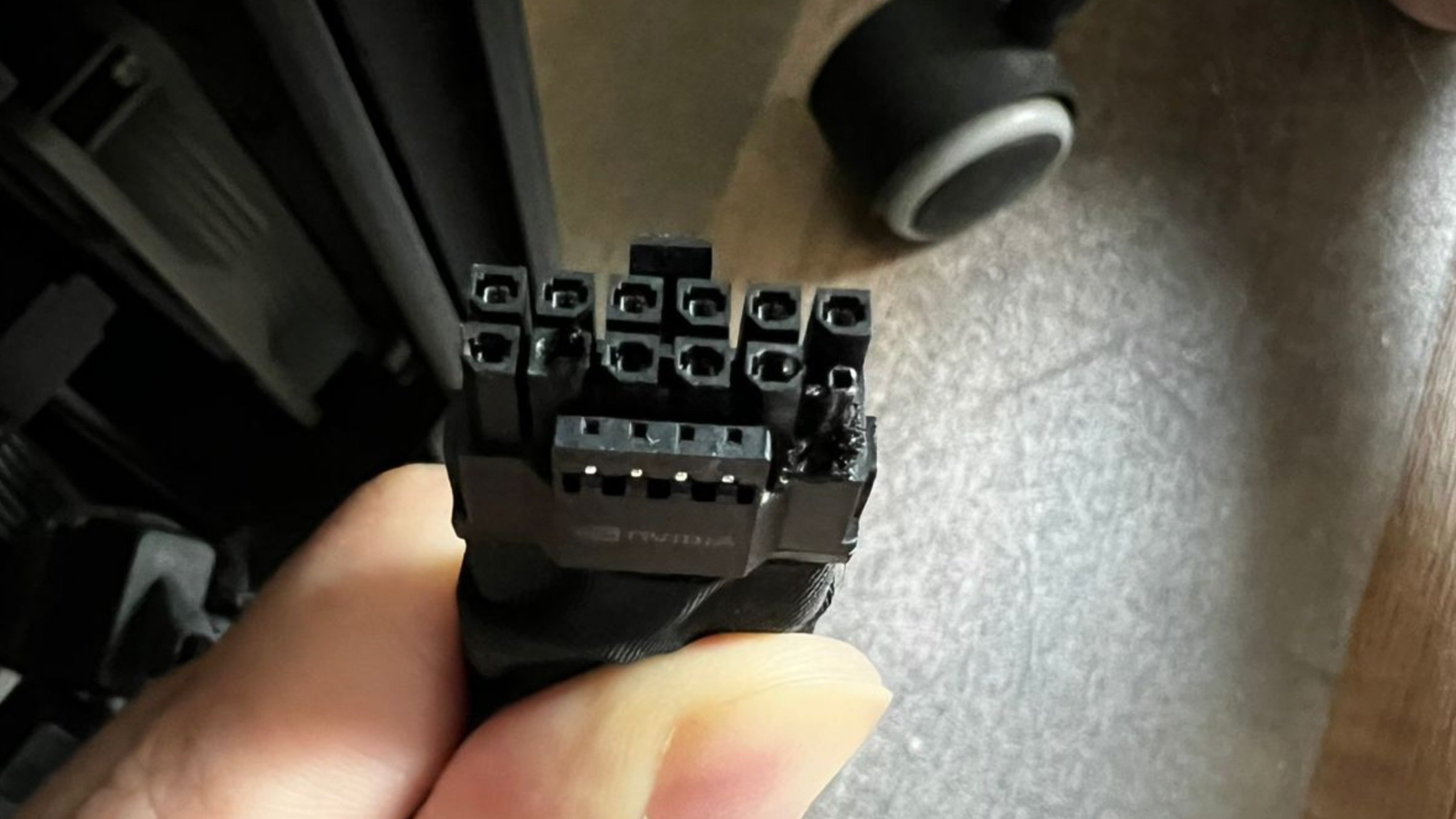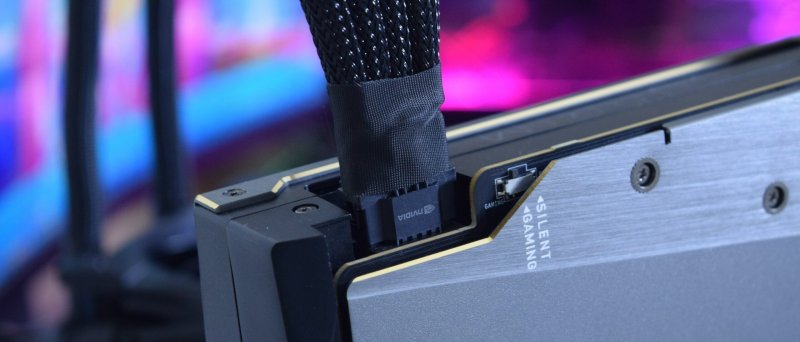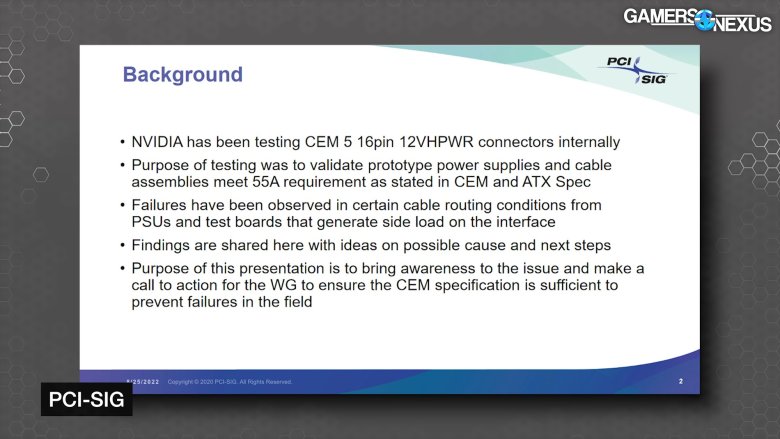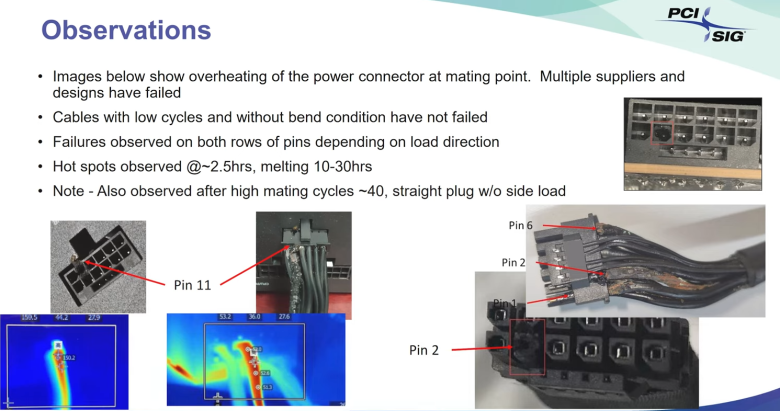The goal of this article is not to come up with a “shocking revelation” or promise to fix something that top experts from all the companies involved are working on (so far with no tangible results). Rather, we will try to present several facts accompanying the case, which are presented by various sources as the crux of the matter, but which in some cases even directly contradict each other, although they sound significant in themselves and are supported by evidence.
1. The problem is with the users, they don’t screw up the connectors
The explanation presented by Nvidia (as well as other sources addressing the issue) is that users don’t push the connector all the way in, leaving millimeter space for a row of pins, and the contact isn’t optimal. While there is certainly some truth to this explanation, when compared with other facts it cannot explain the whole situation and leaves room for other influences/causes.
2. Why doesn’t the GeForce RTX 3090 Ti melt?
In the online statistics, which are maintained by enthusiasts following discussions on international discussion platforms and social networks, 26 cases are noted as of November 13 (only those are included when it is proved that the connector has melted in a photo and, according to the statement by the user, the card did not survive the event). Nvidia later said it had information on about 50 cases. What is interesting, however, is that everything is exclusively about the GeForce RTX 4090, while there is not a single known case of merging the GeForce RTX 3090 Ti, which is equipped with the same power connector (16pin) and limited by the same power of 450W. limit.
The GeForce RTX 3090 Ti has sold less, but certainly not much less that there has not yet been a single case of problem involving dozens of GeForce RTX 4090 (especially if the problem were to be on the user side and not related to a specific card in any way).
3. Why doesn’t GeForce RTX 3070-3090 melt?
The connector with the same power interface (12 pins for power; just without the four communication pins) is also used by other cards of the previous generation. It is true that models like the GeForce RTX 3070 have a significantly lower TDP, so they load the connector less, but OC card models like the GeForce RTX 3080 Ti, GeForce RTX 3090 etc. they can achieve a similar consumption under load as the GeForce RTX 4090. Furthermore, a large number of them were sold. But dozens of photos of melted connectors have not arrived.
4. Embedded connectors
Users often point out that with the previous generation the connectors were relatively easy to access, the adapter/cable could easily be plugged into the board, and the user could clearly see if it was fully seated.
photo: WCCF Tech
However, for most GeForce RTX 4090 models, the connector is more or less “drowned”. The cooler or PCB makes it partially impossible to grip firmly when plugging in, and eventually covers the viewing angle from which it would be easy to see if it’s not pressed all the way to one side or the other.
5. No feedback
Compared with the more classic 6-pin/8-pin connectors, the 16-pin connectors look a bit fragile (some are apparently very fragile, as there are even photos of broken ones), so on the one hand, users are afraid to use more force to insert them, on the other hand it may not be easy to see if the connector is pressed home, and on the third side, the 16-pin connector also lacks feedback in an equally audible click / click (or in the hand “audible”) that the latch clicked.
6. Nvidia knew it, PCI-SIG knew it
Documents posted by Seasonic have revealed that Nvidia and PCI-SIG were aware of the issues with the 16-pin power connectors long before the release of the GeForce RTX 4090 (described in the August PCI-SIG presentation). The documentation describes overheating (thermal change) of the connectors and the failures caused by it.
So can it really be said that the only reason for the problems is a bad connection on the part of the user, when even the lab specialists who are supposed to know how to connect the connector have noticed problems?
7. Bad connection or bent cables?
The PCI-SIG presentation describes problems with cable bending and remapping of connectors, which leads to poor contact.
According to PCI-SIG, “different designs and different manufacturers” failed. During testing, there shouldn’t be any issues with unbent cables that haven’t been repeatedly unplugged/plugged in. More pronounced heating appeared after about 2.5 hours of operation under load, melting after 10-30 hours.
8. Quality of connectors
Initial reports were of poor quality adapters from a supplier and poor soldering. Then there was also a comparison of the construction, however, later failures of adapters from other manufacturers or even directly to the connectors on the native cable coming from the source were reported. It can be inferred that the quality of workmanship has a certain influence, but it is not the only problem (more precisely, the only cause of problems).
The whole situation appears to be the result of a combination of a number of weaknesses and shortcomings, of which the following three have the most significant influence:
- A relatively thin connector, which is not sized to solder a massive bundle of thick wires, and which is not oversized enough to ensure that the contact area is still sufficient for trouble-free operation under wire load or a millimeter of indentation.
- Card building does not go towards eliminating potential problems. There isn’t enough space around the connector on the GeForce RTX 4090 series to easily plug it in and see from both sides if it’s fully seated.
- The connector design provides no feedback to the user on insertion – there is no click-to-close.
The situation can also be summarized from the point of view of the single entities: From Nvidia’s point of view the problem is the incomplete insertion of the connector. From a PCI-SIG perspective, the problem is in cable bending and repeated plugging (connector life). From the point of view of many users, the problem is the drowning of the connector on the board and the absence of feedback on the correct connection. From the point of view of some electrical engineers, the problem lies with the connector, whether it is its overall design or implementation by individual manufacturers (construction, soldering, sizing, etc.). Most likely, the current state is the result of a combination of the indicated causes.





